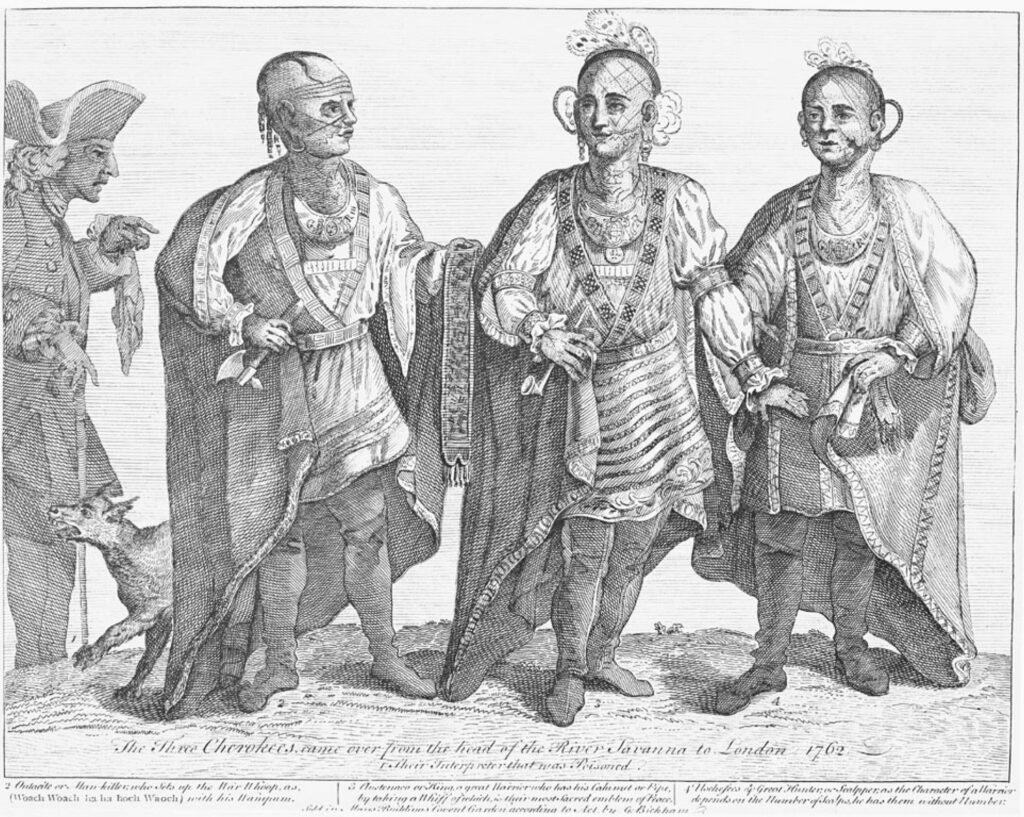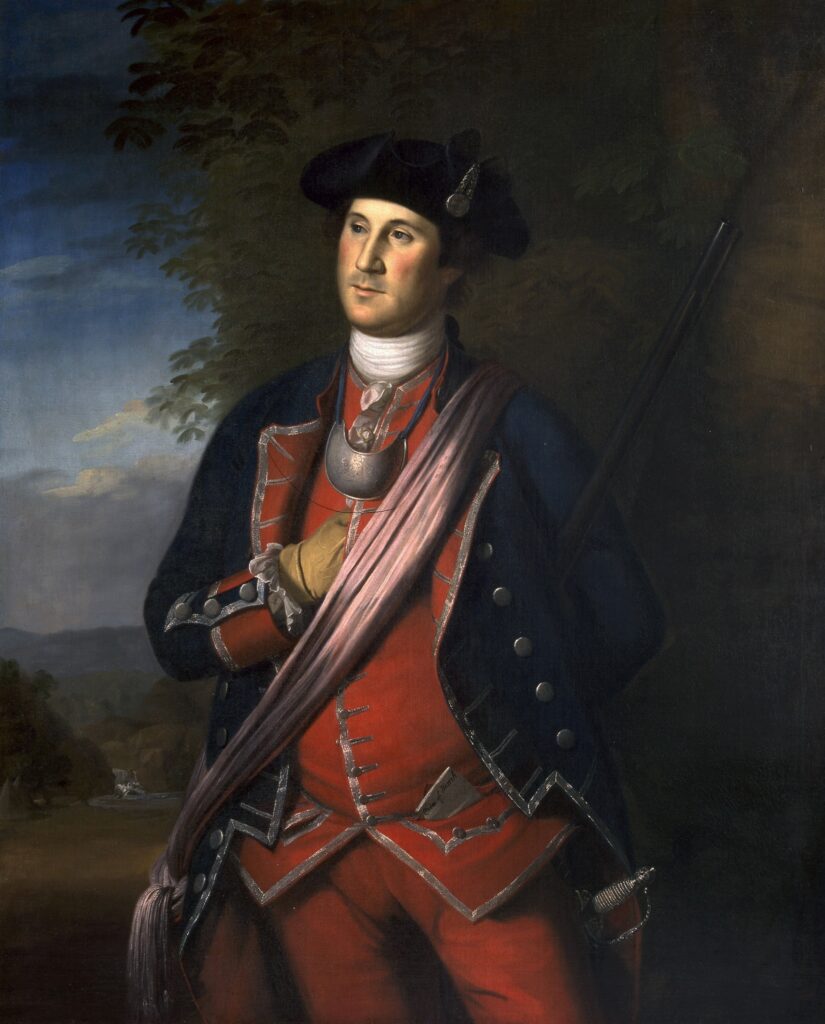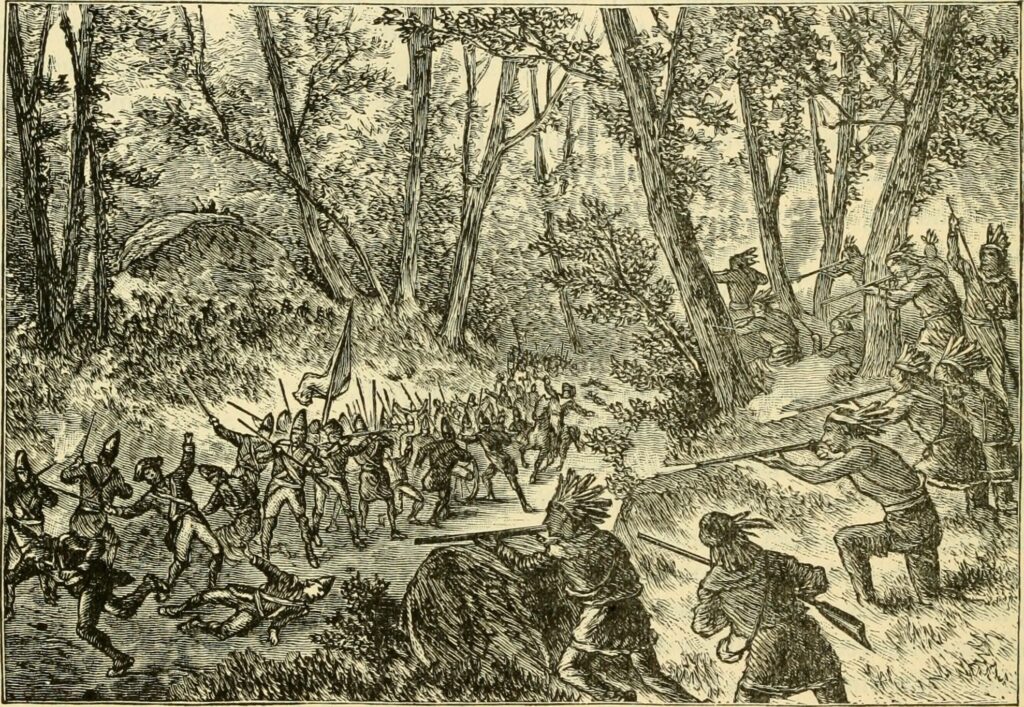The French and Indian War, also known as the Seven Years’ War, was a significant conflict that occurred between the French forces of New France and the British forces of the Thirteen Colonies, with the support of their respective Native American allies, including the Iroquois Confederacy. The war began in 1754 with hostilities breaking out at Fort Duquesne, quickly spreading to other areas along the frontier, including Fort Frontenac and Montreal. The conflict involved not only the Europeans but also indigenous peoples, including Indians and Canadians.

The French claimed ownership of the Ohio River Valley, but the British disputed this claim and sought to expand their own territory westward. This led to clashes between both sides, with troops and warriors sent from both factions to fight. Initially remaining neutral in the conflict, the Iroquois Confederacy eventually sided with the British due to their longstanding enmity with the French. The native americans also got involved in the wars as indian allies of either the French or the British, and some indians fought on their own accord.
King Louis XV of France appointed Pierre de Rigaud, Marquis de Vaudreuil-Cavagnial to lead his forces in North America and oversee conquests on the frontier. The French had a strong presence in North America, thanks largely to their Canadian settlements in Quebec City and Montreal. Additionally, they had established Fort Frontenac and Louisbourg as strategic outposts against the Iroquois Confederacy.
In addition to these settlements, French colonists established a network of forts, known as French fortresses, throughout New France which they used as bases for military operations against British territories. The wars between the French and British lasted for nine years until 1763 when it ended with a British victory over French claims.
The summary of this war is that it was one of many wars fought by the British Empire, with British colonists and Native American tribes supporting opposing sides in a conquest for control of land in North America. The outcome was a decisive victory for Britain, which gained control over much of what is now Canada as well as parts of present-day United States.
If you are looking for more information about the revolutionary war or want to test your knowledge on wars, there are many resources available online such as quizzes on Quizlet or APUSH study guides. You can also find books or documentaries that cover conquest and the role of native americans during this period in history.
Causes of the French and Indian War
Dispute Over Land Claims

The French and Indian War, also known as the Seven Years’ War, was caused by a dispute over land claims in North America between the French and British. The British colonies wanted to expand westward, but the French claimed the Ohio River Valley as their own territory, which was part of their colony called New France. This led to tensions between the two sides, with both building forts and engaging in skirmishes while also forming alliances with various Indian tribes, including the Iroquois.
One key event that contributed to the tension between Britain and France was the wars fought over the conquest of new France on the frontier. Virginia’s governor sent a young George Washington to deliver a message to the French asking them to leave British territory. The French refused, leading Washington to lead an attack on their forces. This marked one of the first battles of the war.
Tensions Between European Powers
During the French and Indian War, there were some conflicts that happened in Europe that were connected to what was going on in North America. France and England were already rivals in Europe, and they had been fighting each other on and off for centuries. When they both started claiming land in North America, it just added fuel to the fire. One of the European conflicts that was related to the war in North America was called the Seven Years’ War. This was a big, complicated war that involved a bunch of different countries. Basically, France and England were fighting over who would be the dominant power in Europe. The Seven Years’ War ended up being really important for the outcome of the French and Indian War, because it determined who would have more resources and allies to fight with.
The Diplomatic Revolution and the French and Indian War
The Diplomatic Revolution in Europe during the French and Indian War marked a significant shift in the alliances and power dynamics among European nations. The conflict, primarily fought between France and Britain in the North American continent, had far-reaching consequences that extended beyond the colonial territories. The Diplomatic Revolution, occurring between 1756 and 1757, witnessed a notable realignment of alliances as traditional rivals France and Austria, along with their respective allies, temporarily set aside their enmity and formed a new alliance. This unexpected partnership aimed to counter the rising power and territorial ambitions of Britain, whose victories in the war had severely weakened French influence in North America.
The diplomatic maneuvering showcased the intricate balance of power in Europe and highlighted the pragmatism of nations in pursuing their strategic interests, even if it meant forging temporary alliances with former adversaries. Ultimately, the Diplomatic Revolution during the French and Indian War reshaped the geopolitical landscape of Europe, marking a turning point in the dynamics of power and diplomacy among major European powers of the time.
The wars were also fueled by tensions between European powers vying for dominance in the New World frontier. French Canadians had established a strong presence in Canada, while British colonists had control of several colonies along the eastern seaboard.
As both sides sought to expand their frontier territories, wars inevitably arose between the tribes and Indians. There were longstanding cultural differences between the two nations that further fueled animosity towards each other.
Full-Scale War
These disputes eventually boiled over into a full-scale war in 1754 when fighting broke out at Fort Duquesne (present-day Pittsburgh). The conflict quickly spread throughout North America and even into Europe as various European powers joined in on either side. This war involved the Iroquois and New France, and was led by the famous George Washington.

The war, also known as the French and Indian War, lasted until 1763 when Britain emerged victorious, gaining control of much of North America from France. The conflict involved not only the French and their Native American allies but also the Iroquois Confederacy, who initially remained neutral before siding with the British. However, this victory came at great cost as it left Britain heavily indebted and strained relations with its American colonies, including figures such as George Washington who served as an officer in the conflict. Additionally, the war also had significant impacts on the southern colonies, where Native American tribes allied with the French conducted raids and attacks on settlers.
French and Indian War in North America: France, Colonists, and Native Allies vs Great Britain
French and Indian War: A Competition for Colonial Territories
French and Indian War was a significant conflict fought in North America between France, American colonists, and Native allies against Great Britain. The war was a result of the competition between France and Britain over colonial territories in North America, particularly Canada and the Ohio River Valley. The French colonists had a strong presence in Canada, while the British colonists were concentrated in the British colonies along the eastern coast of North America. The war also involved various Indian tribes, including those in the south. George Washington played a significant role in the conflict.
The Role of American Colonists
The American colonists played an important role in the war by providing troops and resources to the British forces. However, they also suffered from the conflict as their settlements were attacked by Native allies of the French tribes. The American colonies were growing rapidly at that time, which made them more powerful than ever before. They provided Anglo soldiers to fight alongside British troops against New France forces.
The Contribution of Native Allies
Native allies, including various tribes of indians, played a significant role in this war. They helped both the anglo and French sides, but mostly sided with France due to their long-standing trade relationships with them. After the war ended with Treaty of Paris 1763, many tribes from the west joined together under one leader named Pontiac to fight against British control over their land. George Washington also played a role in this conflict as a major in the British Army.
George Washington’s Role in the French and Indian War

Young Officer in Virginia Militia
As a young officer in the Virginia militia, George Washington played an important role in the French and Indian War. In 1754, he led an expedition to the Ohio region with the aim of challenging New France’s territorial claims. During this expedition, he formed alliances with various Indian tribes, which proved crucial in subsequent battles. One of these battles included an attack on a French commander named Joseph Coulon de Jumonville, which is considered to be the first battle of the war. The attack was unsuccessful, but it marked the beginning of Washington’s military career.
Defending Fort Necessity
Later in the war, Washington played a key role in defending Fort Necessity against the French and their Native American allies from the tribes of Ohio. In July 1754, he led an expedition of soldiers to build a fortification near present-day Uniontown, Pennsylvania to protect against the French forces from New France. However, they were soon attacked by a much larger force led by Coulon de Villiers. Despite being outnumbered and outgunned, Washington and his men fought bravely but were eventually forced to surrender after running out of ammunition.
Valuable Military Experience
Despite some early setbacks, George Washington gained valuable military experience during the war against New France that would serve him well in his future career as a general and statesman. He led an expedition to build a fort in Ohio, where he learned important lessons about strategy and tactics that would help him lead American forces to victory during the Revolutionary War. His experiences also helped shape his views on government and national defense.
Braddock’s Defeat: Fighting a New War with Old Tactics
Braddock’s March: The Attempt to Capture Fort Duquesne
In the early stages of the French and Indian War, Major General Edward Braddock led a British army of around 1,400 soldiers and colonial militia on an expedition to capture Fort Duquesne, a strategic French fort located in present-day Pittsburgh. This mission was known as Braddock’s March. The fort was located in the heart of New France, and Braddock was accompanied by a young George Washington, who would later become the first President of the United States. During the mission, Braddock’s army faced fierce resistance from various tribes.
Despite having superior numbers, Braddock’s army was ambushed by French and Native American forces from New France on July 9, 1755 during the revolutionary war. The battle was chaotic and brutal as the tribes used guerrilla tactics in the dense forests. The British soldiers, including a young George Washington, were trained to fight in open fields but were not prepared for this type of warfare.
The Defeat of Braddock: A Setback for the British
The defeat of Braddock during his expedition was a major setback for the British in their efforts to control North America during the French and Indian War. Not only did they lose one of their most experienced commanders, but they also lost a significant portion of their military force while facing resistance from the tribes allied with New France. Despite the involvement of Washington, the outcome remained unfavorable for the British.
David Preston: Historian and Author
David Preston is a historian and author who has written extensively about Braddock’s Defeat and the events leading up to it. In his book “Braddock’s Defeat: The Battle of the Monongahela and the Road to Revolution,” he provides an in-depth analysis of what happened during that fateful battle as well as George Washington’s involvement in the expedition against Fort Duquesne in New France.
Preston argues that one of the main reasons for Braddock’s defeat during his expedition to Fort Duquesne was his overconfidence in his troops’ ability to fight in unfamiliar terrain in New France. He also suggests that Braddock failed to take into account the intelligence provided by local scouts, including George Washington, who warned him about possible ambushes along his route.
Another factor contributing to Braddock’s downfall during his expedition to capture Fort Duquesne was his insistence on following European military tactics rather than adapting them to fit the unique circumstances of North America, specifically New France. His rigid approach made it difficult for his troops, including a young George Washington, to navigate the dense forests and engage in guerrilla warfare.
General Forbes’ British Forces Capture Fort Duquesne

The capture of Fort Duquesne was a significant victory for the British military and the British Empire, with Washington playing a crucial role in the mission. General John Forbes led the British forces, alongside Washington, in capturing Fort Duquesne, a French fortress located at the confluence of the Allegheny and Monongahela rivers. This victory allowed them to gain control of the Ohio River Valley and expand their territory in North America.
Strategic Use of Regular Troops
General Forbes’ success in capturing Fort Duquesne was due in part to his strategic use of regular troops, including those led by Washington. These troops were better trained and equipped than the colonial militia that had previously been used in battles against the French in Ohio. The use of regular troops proved crucial, as they were able to withstand French attacks and mount effective counterattacks.
Part of Larger Strategy by British Government
The capture of Fort Duquesne, where George Washington played a key role, was part of a larger strategy by the British government, led by Prime Minister William Pitt, to defeat the French in North America. This strategy also included capturing other key French forts such as Fort Niagara and Louisbourg, as well as implementing a naval blockade to cut off French supplies. The successful implementation of this strategy ultimately led to Britain’s victory over France in North America.
The Outcome of French and Indian War
The Treaty of Paris 1763 officially ended this conflict between the Anglo and French forces, giving Great Britain control over Canada and most of the French colonies in North America. The treaty also affected the tribes of Indians who were caught in the middle of the war. This led to a significant expansion of British colonies and influence in the region, but it also created tension between Britain and its American colonies, including Washington, due to new taxes imposed on them to help pay for military expenses during this war.
Impact of the Seven Years’ War on the American Revolution
The Seven Years’ War, also known as the French and Indian War, was a pivotal moment in colonial history that set the stage for the American Revolution. The war had far-reaching consequences that impacted not only Britain and France but also their respective colonies in North America, including Fort Washington and LA. In this section, we will explore how the Seven Years’ War influenced the American Revolution and contributed to the eventual independence of the United States, with a particular focus on these two key locations.
Debt and Taxation
One of the most significant impacts of the Seven Years’ War on colonial America was its economic fallout. The war left Britain in substantial debt, prompting King George III’s government to increase taxation on its colonies to pay off its debts. This decision sparked resentment among colonists who felt they were being unfairly burdened with taxes without representation in Parliament. Additionally, the war led to the construction of new forts in strategic locations, such as Fort Washington, which played a crucial role in defending against potential attacks. The Stamp Act of 1765, which imposed taxes on legal documents, newspapers, and other printed materials, was met with widespread protests and resistance from colonists.
Territorial Changes
Another consequence of the Seven Years’ War was the establishment of Fort Washington as a British military stronghold in North America. This fort was built after France ceded its territories to Britain under the Treaty of Paris (1763), which also fueled tensions between British authorities and colonists who resented increased regulation and control over their lives. Colonists believed that they should have greater autonomy over their affairs rather than being subject to British rule.
Military Experience
Many future leaders of the American Revolution gained military experience during the Seven Years’ War, which included several battles fought at forts. George Washington served as a young officer in Virginia’s militia during this time, participating in the defense of Fort Necessity, while Benjamin Franklin helped raise funds for British troops fighting against France in Fort Loudoun. These experiences would prove invaluable during later conflicts when these men would take up arms against British forces defending their own forts.
Shift in Colonial Policy
Finally, perhaps one of the most significant impacts of the Seven Years’ War on colonial America was a shift in British policy towards greater control and regulation over its colonies. The British government believed that the colonies should contribute more towards their own defense and governance, leading to increased regulation and taxation. This shift in policy further alienated colonists who felt increasingly oppressed by British rule, fueling revolutionary fervor. Additionally, General Washington played a crucial role in the war by leading his troops to victory at Fort Necessity.
Conclusion of the French and Indian War
The French and Indian War was a pivotal moment in American history, with profound impacts on both the continent and the world. The conflict was rooted in complex political and economic tensions between Great Britain, France, and their respective colonies. It ultimately resulted in British victory, but not without significant losses on all sides. The war was fought over control of forts and territories, including Fort La Boeuf, which played a crucial role in the early stages of the conflict.
One of the key factors that led to the war was competition over land and resources in North America. British colonists were expanding westward into territory claimed by France, leading to clashes between settlers and Native American tribes who were allied with one side or the other. Meanwhile, European powers were jockeying for control of valuable trade routes and resources like fur pelts. The construction of new forts by both sides further escalated tensions and heightened the potential for conflict.
The war itself saw brutal fighting on multiple fronts, with both sides enlisting Native American allies to aid them in battle. George Washington played a critical role early on as a young officer leading troops against French forces in Virginia. However, it was ultimately General Forbes who led British forces to capture Fort Duquesne and secure victory for Great Britain.
The impacts of the Seven Years’ War (as it was known in Europe) would be felt for years to come. The British victory solidified their control over North America while also leaving them deeply in debt from the cost of fighting, which included building and maintaining numerous forts. This would eventually lead to increased tensions with their colonies as they sought ways to recoup those costs through taxes.
Frequently Asked Questions about the French and Indian War
What was the French and Indian War?
The French and Indian War, also known as the Seven Years’ War, was a conflict that took place from 1754 to 1763 between France and Great Britain, with their respective Native American allies, over territorial disputes in North America.
What were the main causes of the French and Indian War?
The main causes of the French and Indian War included disputes over territorial claims, control of valuable fur trade routes, and competition for power and influence in the North American colonies between France and Britain.
Who were the major participants in the French and Indian War?
The major participants in the French and Indian War were France and its Native American allies, on one side, and Great Britain and its American colonists, along with some Native American tribes allied with the British, on the other side.
What were the significant outcomes of the French and Indian War?
The French and Indian War resulted in the British victory and the signing of the Treaty of Paris in 1763. As a result, France ceded most of its North American territories to Great Britain, which significantly changed the balance of power in North America and set the stage for future conflicts.
What were the key battles of the French and Indian War?
Some key battles of the French and Indian War include the Battle of Quebec, Battle of Fort Duquesne, Battle of Fort William Henry, and Battle of Louisbourg. These battles played significant roles in determining the outcome of the war.
How did the French and Indian War impact the American colonies?
The French and Indian War had a profound impact on the American colonies. It increased tensions between the colonies and the British government, led to increased British control over the colonies, and set the stage for the American Revolution.
What role did Native American tribes play in the French and Indian War?
Native American tribes played a significant role in the French and Indian War. They formed alliances with both the French and British forces, and their involvement often determined the outcome of battles. Many tribes faced internal divisions due to conflicting allegiances.
Did the French and Indian War have any global implications?
Yes, the French and Indian War had global implications. It was part of the larger Seven Years’ War fought between major European powers, with conflicts spanning multiple continents. The outcome of the war reshaped colonial territories and had lasting effects on international relations.
What was the significance of the Treaty of Paris in ending the French and Indian War?
The Treaty of Paris, signed in 1763, marked the end of the French and Indian War. It resulted in France ceding most of its North American territories to Great Britain, effectively ending French colonial presence in the region and shifting the balance of power in North America.
What were the consequences of the French and Indian War for Native American tribes?
The French and Indian War had devastating consequences for many Native American tribes. It resulted in the loss of tribal lands, disrupted traditional trade networks, and led to increased tensions with European settlers, ultimately contributing to the decline of many Native American communities.
How did the French and Indian War impact the relationship between the American colonies and Great Britain?
The French and Indian War strained the relationship between the American colonies and Great Britain. The war created a sense of unity among the colonists, who felt a shared experience and resentment towards British control and policies, setting the stage for future colonial resistance and demands for independence.
What role did George Washington play in the French and Indian War?
George Washington, then a young officer in the Virginia militia, played a significant role in the French and Indian War. He led an expedition and engaged in military campaigns, gaining valuable experience that would later contribute to his leadership during the American Revolution and his presidency.
What impact did the French and Indian War have on the British economy?
The French and Indian War had a significant impact on the British economy. It left the British government with a massive war debt, leading to increased taxation and attempts to exert greater control over the American colonies, which in turn contributed to growing colonial discontent and resistance.
Did the French and Indian War have any cultural or social effects?
Yes, the French and Indian War had cultural and social effects. It shaped attitudes and perceptions among colonists and Native Americans, influenced intercultural relations, and contributed to the emergence of a distinct American identity and a sense of unity among the colonists.

